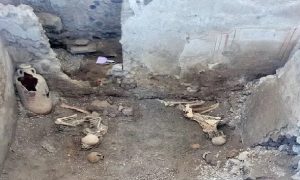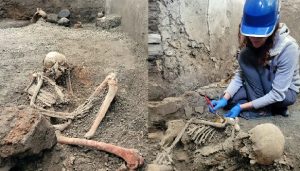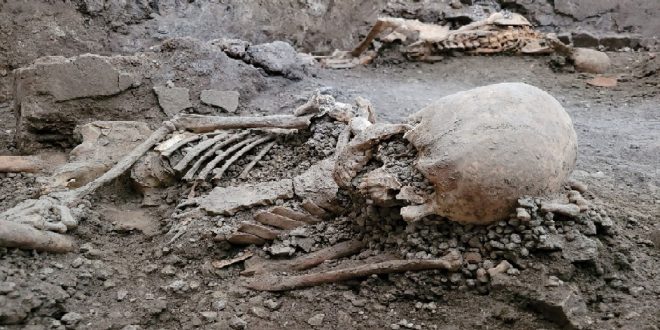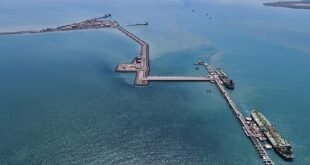18-05-2023
POMPRII, ITALY: Archaeologists at Pompeii have uncovered two new skeletons of male victims who likely died in an earthquake that accompanied the devastating volcanic eruption of Mount Vesuvius, which buried the Italian city in ash in 79 AD.
 The skeletons, believed to be of men aged at least 55, were found in the Casti Amanti, or House of Chaste Lovers, beneath a wall that collapsed before the area was covered in volcanic material.
The skeletons, believed to be of men aged at least 55, were found in the Casti Amanti, or House of Chaste Lovers, beneath a wall that collapsed before the area was covered in volcanic material.
The area was likely undergoing reconstruction work at the time of the eruption, following an earthquake a few days earlier.
Pompeii, 23km (14 miles) southeast of Naples, was home to about 13,000 people when it was buried under ash, pumice pebbles and dust as it endured the force of an eruption equivalent to many atomic bombs.
Pompeii Archaeological Park Director Gabriel Zuchtriegel said on Tuesday the men were killed not by volcanic ash but by collapsing buildings, noting that wall fragments were found between their fractured bones.
“Modern excavation techniques help us to better understand the inferno that completely destroyed the city of Pompeii over two days, killing many inhabitants,” the German archaeologist said.
 “In recent years, we have realized there were violent, powerful seismic events that were happening at the time of the eruption,” Zuchtriegel said.
“In recent years, we have realized there were violent, powerful seismic events that were happening at the time of the eruption,” Zuchtriegel said.
One of the skeletons had an arm raised as if in defence.
The earthquake struck as the huge blast from nearby Mount Vesuvius covered the city of Pompeii with thick volcanic ash, preserving the bodies of many of its residents.
The Pompeii site, not discovered until the 16th century, has seen a burst of recent archaeological activity aimed at halting years of decay and neglect, largely thanks to a recently concluded 105m-euro ($115.58m) European Union-funded project. (Int’l News Desk)
 Pressmediaofindia
Pressmediaofindia




